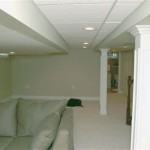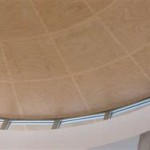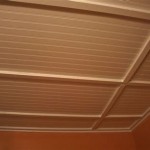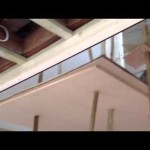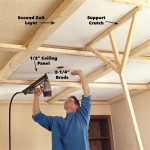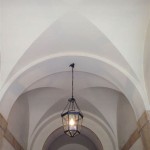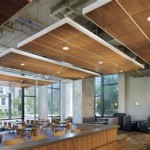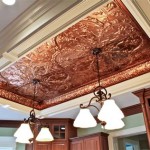What Does Vaulted Ceiling Mean?
Vaulted ceilings are a captivating architectural feature that elevate the grandeur and spaciousness of any room. They are characterized by their arched shape, which vaults upwards from the walls, creating a sense of height and volume. Vaulted ceilings have been used throughout history in various architectural styles, from Gothic cathedrals to modern homes.Types of Vaulted Ceilings
There are several types of vaulted ceilings, each with its unique shape and aesthetic appeal:-
Barrel Vault:
A simple and classic vaulted ceiling, where the arch spans continuously from one wall to the other. -Groin Vault:
Created by the intersection of two barrel vaults, resulting in a series of intersecting ribs. -Rib Vault:
A vaulted ceiling with prominent ribs or arches that support the ceiling and create a visually striking pattern. -Domical Vault:
A spherical or dome-shaped vaulted ceiling that creates a dramatic and spacious effect. -Cloister Vault:
A vaulted ceiling with a series of parallel ribs, a central nave, and lower side aisles.Advantages of Vaulted Ceilings
Vaulted ceilings offer numerous advantages, both aesthetic and functional:-
Increased Space and Height:
Vaulted ceilings create an illusion of height and make rooms feel more spacious and airy. -Natural Light:
Vaulted ceilings often include windows or skylights, allowing natural light to flood the room and enhance its brightness. -Architectural Detail:
The arched shape and ribs of vaulted ceilings add architectural interest and can enhance the overall design of a room. -Acoustic Benefits:
The vaulted shape helps to disperse sound waves, improving acoustics and reducing reverberation.Considerations for Vaulted Ceilings
While vaulted ceilings are visually stunning, there are certain considerations to keep in mind:-
Cost:
Vaulted ceilings are more complex and expensive to install than flat ceilings. -Maintenance:
The height of vaulted ceilings can make it more challenging to maintain and access fixtures, such as light bulbs or ceiling fans. -Structural Integrity:
Vaulted ceilings require proper structural support to ensure their stability and longevity. -Lighting:
Lighting fixtures for vaulted ceilings need to be carefully planned to provide adequate illumination and avoid creating shadows.Conclusion
Vaulted ceilings are a remarkable architectural feature that can transform the ambiance of a room. Their arched shapes, increased height, and natural light create a spacious, elegant, and acoustically pleasing environment. While they come with some considerations, the aesthetic and functional benefits of vaulted ceilings make them a worthwhile investment for those seeking to enhance the beauty and functionality of their homes.
Differences Between Vaulted Ceilings And Cathedral

Vaulted Ceilings 101 History Pros Cons And Inspirational Examples

Vaulted Ceilings 101 The Pros Cons And Details On Installation Bob Vila

Vaulted Ceiling Types Advantages Disadvantages

Ceilings Vaulted Or Cathedral Drummond House Plans Blog

What Is A Vaulted Ceiling Pros And Cons Of Ceilings

What Is A Vaulted Ceiling Pros And Cons Of Ceilings

Vaulted Ceilings 101 History Pros Cons And Inspirational Examples

What Is Vaulted Ceiling 11 Diffe Types Of Advantages And Disadvantages Ceilings Cost

What Is A Vaulted Ceiling Pros And Cons Of Ceilings
Related Posts

